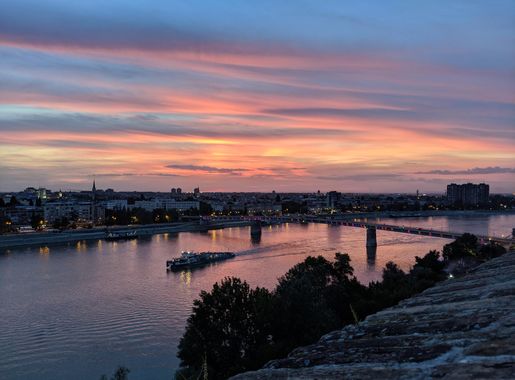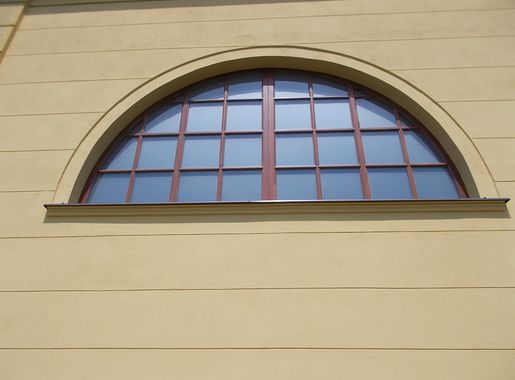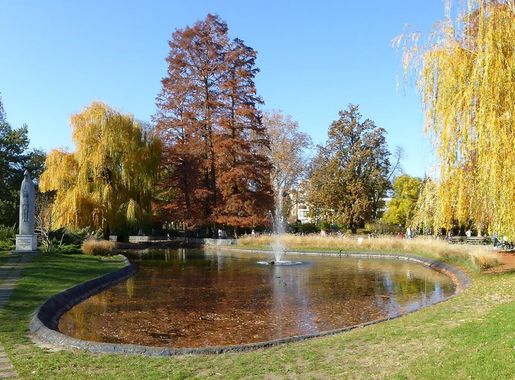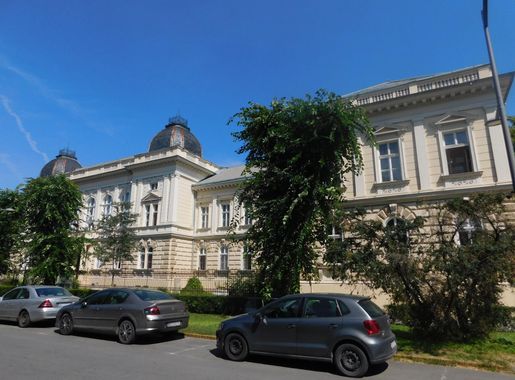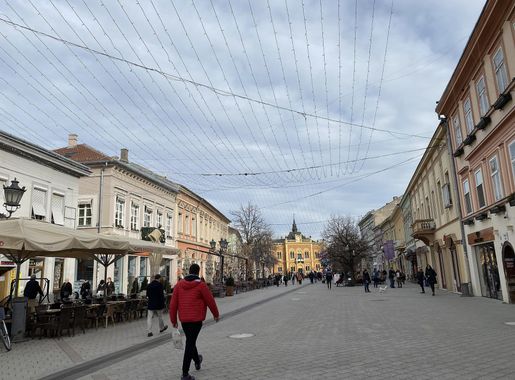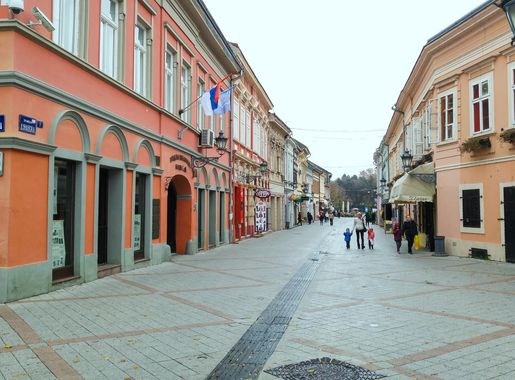
The Enchanting Heart of Novi Sad: Stari Grad
Explore Stari Grad, the historic and cultural epicenter of Novi Sad, Serbia, where centuries-old architecture meets vibrant modern life.
Stari Grad, the historic core of Novi Sad, is a mesmerizing blend of old-world charm and vibrant modernity. This neighborhood is a tapestry of cobblestone streets, elegant baroque buildings, and bustling squares that tell the story of Novi Sad’s rich cultural heritage. As you wander through Stari Grad, you’ll encounter landmarks like the Petrovaradin Fortress, which offers panoramic views of the Danube River and the city skyline. The fortress is not just a historical site but also a cultural hub, hosting the famous EXIT music festival every summer. Stari Grad is also home to the impressive Orthodox Cathedral of Saint George, a masterpiece of Serbian architecture. Nearby, the bustling Zmaj Jovina Street is perfect for a leisurely stroll. Lined with cafes, boutiques, and restaurants, this pedestrian-friendly zone captures the lively spirit of Novi Sad. Don’t miss the chance to visit the Museum of Vojvodina, where you can delve into the region’s history and art. Food enthusiasts will be delighted by the local cuisine, which reflects a blend of Serbian, Hungarian, and Austrian influences. From traditional bakeries to upscale dining, Stari Grad offers a culinary journey that is as diverse as its history. In the evening, the neighborhood comes alive with music and nightlife, making it a perfect destination for those looking to experience both the cultural and contemporary sides of Novi Sad.
Local tips in Stari Grad
- Visit Petrovaradin Fortress early in the morning or late afternoon to avoid crowds and enjoy the best views.
- Take a guided walking tour to fully appreciate the history and architecture of Stari Grad.
- Try local specialties like česnica and rakija at one of the traditional restaurants.
- Wear comfortable shoes as the cobblestone streets can be challenging to navigate.
- Check the local event calendar, as Stari Grad often hosts cultural events and festivals.
The Enchanting Heart of Novi Sad: Stari Grad
Stari Grad, the historic core of Novi Sad, is a mesmerizing blend of old-world charm and vibrant modernity. This neighborhood is a tapestry of cobblestone streets, elegant baroque buildings, and bustling squares that tell the story of Novi Sad’s rich cultural heritage. As you wander through Stari Grad, you’ll encounter landmarks like the Petrovaradin Fortress, which offers panoramic views of the Danube River and the city skyline. The fortress is not just a historical site but also a cultural hub, hosting the famous EXIT music festival every summer. Stari Grad is also home to the impressive Orthodox Cathedral of Saint George, a masterpiece of Serbian architecture. Nearby, the bustling Zmaj Jovina Street is perfect for a leisurely stroll. Lined with cafes, boutiques, and restaurants, this pedestrian-friendly zone captures the lively spirit of Novi Sad. Don’t miss the chance to visit the Museum of Vojvodina, where you can delve into the region’s history and art. Food enthusiasts will be delighted by the local cuisine, which reflects a blend of Serbian, Hungarian, and Austrian influences. From traditional bakeries to upscale dining, Stari Grad offers a culinary journey that is as diverse as its history. In the evening, the neighborhood comes alive with music and nightlife, making it a perfect destination for those looking to experience both the cultural and contemporary sides of Novi Sad.
Iconic landmarks you can’t miss
Danube Park
Discover the tranquil beauty and cultural vibrancy of Danube Park in Novi Sad, a perfect blend of nature, art, and recreation.
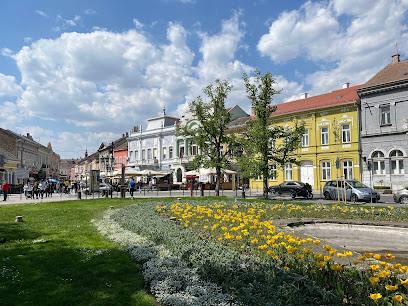
Novi Sad Synagogue
Explore the stunning Novi Sad Synagogue, a historical landmark showcasing exquisite architecture and rich Jewish heritage in the heart of Novi Sad.
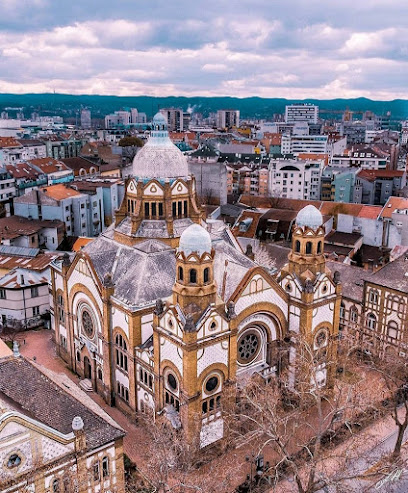
Monument of Svetozar Miletić
Explore the Monument of Svetozar Miletić in Novi Sad, a historical landmark celebrating Serbian heritage and a hub for cultural events.
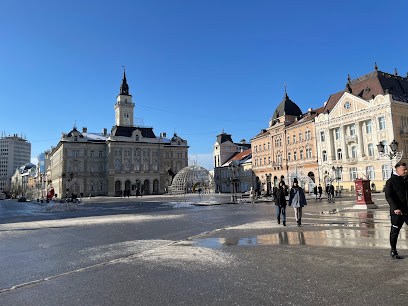
The Pavle Beljanski Memorial Collection Spomen-zbirka Pavla Beljanskog
Discover the Pavle Beljanski Memorial Collection, a premier art museum in Novi Sad, showcasing modern Serbian art and cultural heritage.
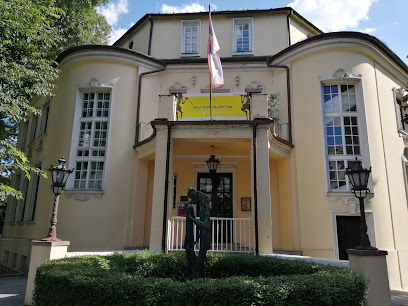
Владичански двор
Discover the Vojvodina Palace: an architectural marvel in Novi Sad, blending spirituality and history in a serene atmosphere.
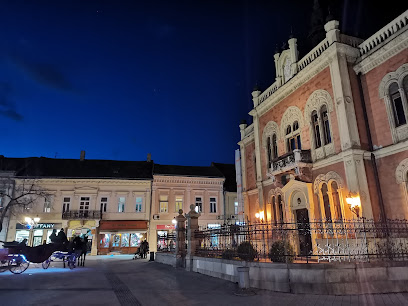
Menrat’s palace
Explore the enchanting Menrat's Palace in Novi Sad, a historical landmark showcasing stunning architecture and rich Serbian heritage.
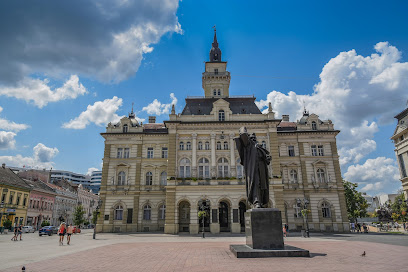
Palace Iron Man
Discover the architectural beauty and rich history of Palace Iron Man in Novi Sad, a captivating landmark in the heart of the city.
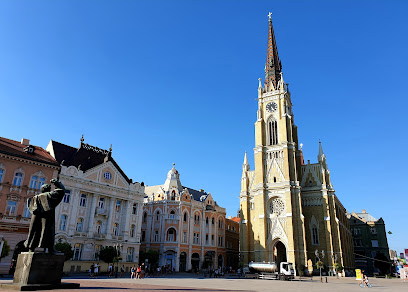
Tanurdžićeva palata
Explore Tanurdžićeva Palata, a historical jewel in Novi Sad, where stunning architecture meets rich cultural heritage for an unforgettable experience.
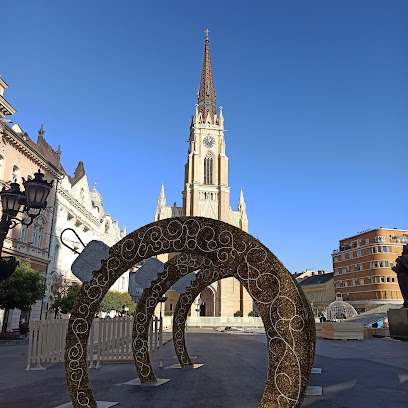
Katedral park
Explore the peaceful Katedral Park in Novi Sad, a perfect blend of nature and history offering a serene escape for all visitors.
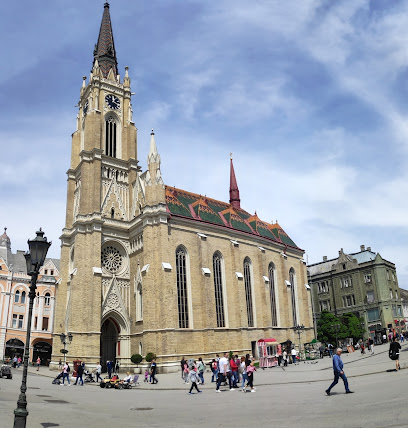
нови сад
Discover the charm of Novi Sad, Serbia, with its rich history, stunning architecture, vibrant culture, and delicious cuisine, all waiting to be explored.
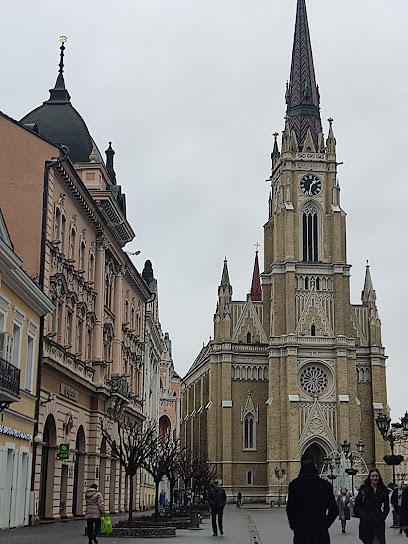
Adamovićeva palata
Explore Adamovićeva Palata, a stunning historical landmark in Novi Sad, showcasing exquisite architecture and a rich cultural heritage in a vibrant square.
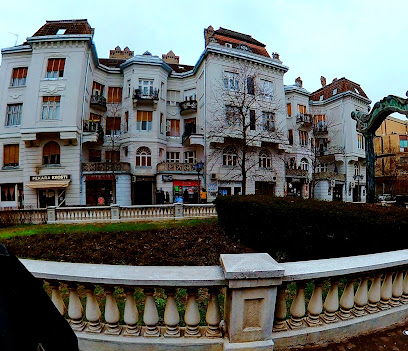
Zgrada Crvenog krsta u Novom Sadu
Explore the historic Red Cross Building in Novi Sad, a symbol of resilience and cultural heritage, showcasing the city's rich history and architectural beauty.
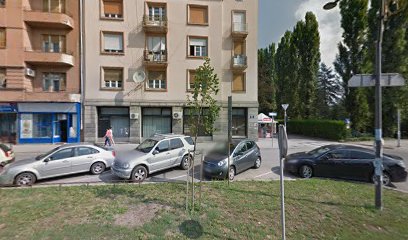
Unmissable attractions to see
Futoški Park
Discover the tranquil beauty of Futoški Park, a lush oasis in Novi Sad perfect for relaxation, recreation, and family fun.
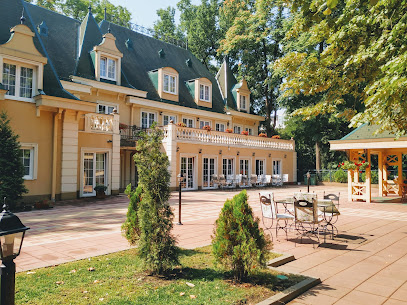
Holy Name of Mary Catholic Church
Discover the architectural beauty and spiritual tranquility of the Holy Name of Mary Catholic Church in Novi Sad, a must-see tourist attraction.
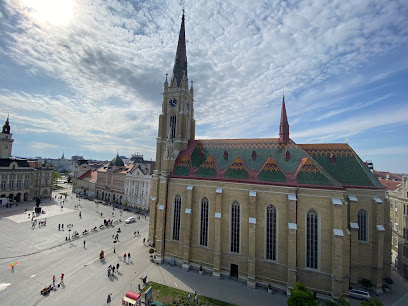
Novi Sad Synagogue
Explore the architectural beauty and rich history of the Novi Sad Synagogue, a cultural gem in Serbia's vibrant city of Novi Sad.
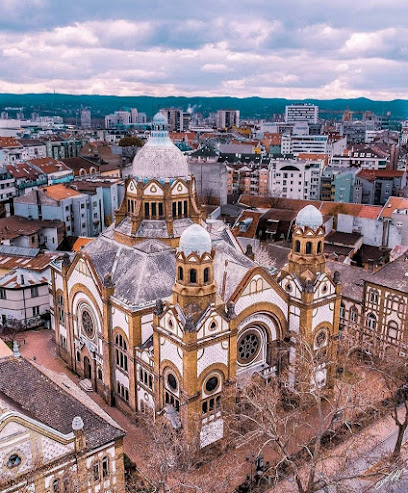
Saint George's Cathedral
Explore Saint George's Cathedral, a stunning Orthodox church in Novi Sad, showcasing exquisite architecture and deep spiritual heritage.
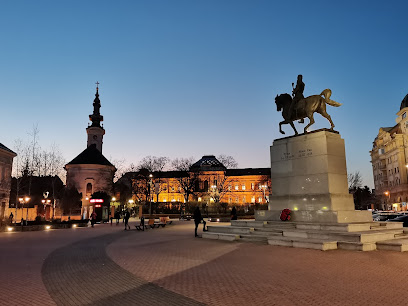
Varadin Bridge (Novi Sad)
Discover the stunning Varadin Bridge in Novi Sad, a beautiful connection between the city and its historic fortress with breathtaking views.
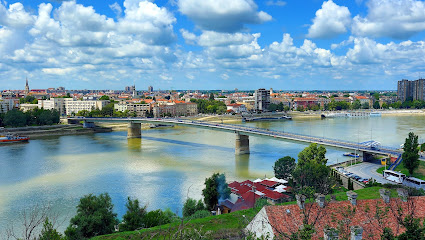
City Museum of Novi Sad
Explore the historical treasures of Novi Sad at the City Museum, where local culture and heritage come to life through fascinating exhibits.
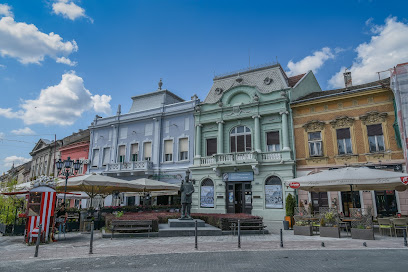
Menrat’s palace
Discover the architectural beauty and rich history of Menrat’s Palace in Novi Sad, a must-visit historical landmark for every traveler.
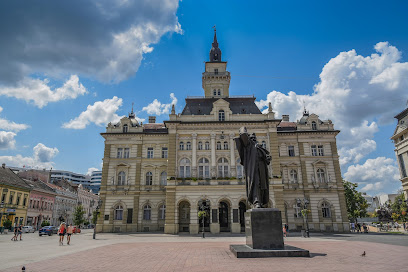
Katedral park
Explore Katedral Park, an urban oasis in Novi Sad offering lush landscapes, cultural landmarks, and a tranquil escape from city life.
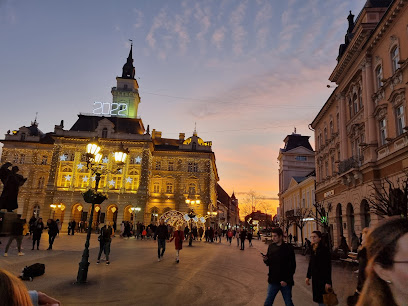
нови сад
Discover the vibrant atmosphere and historical significance of Trg Slobode, the central square of Novi Sad, where culture comes alive.

Фонтана на Позоришном тргу
Explore the cultural heartbeat of Novi Sad at Pozorišni Trg, where history, art, and vibrant community life come together.
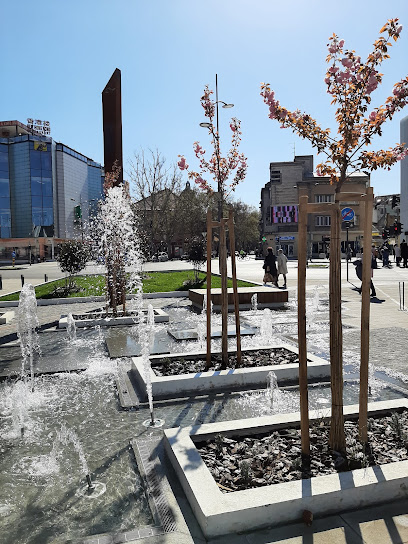
Essential places to dine
The Camelot Novi Sad
Discover The Camelot Novi Sad: A delightful blend of traditional Serbian dishes and modern international cuisine in an enchanting setting.
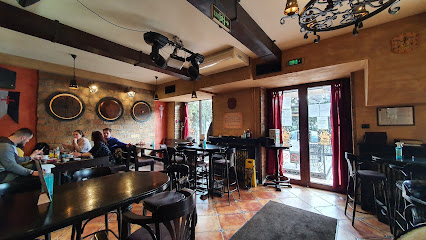
Kafe Restoran Maša
Experience exceptional dining at Kafe Restoran Maša in Novi Sad, where local flavors meet international cuisine in a cozy atmosphere.
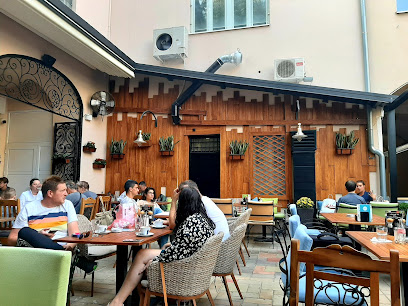
Lanterna
Experience culinary excellence at Lanterna in Novi Sad with diverse dishes and inviting ambiance perfect for every occasion.
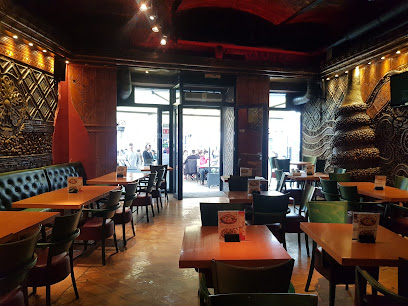
Kombinat
Discover the flavors of Serbia at Kombinat, a vibrant restaurant in Novi Sad known for its innovative dishes and welcoming atmosphere.

Gondola
Discover authentic Serbian flavors at Gondola in Novi Sad - where tradition meets contemporary dining.
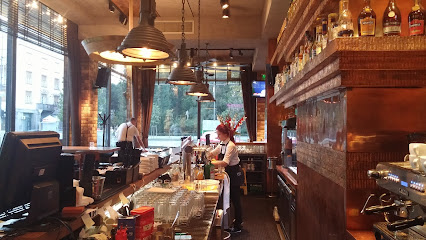
Project 72 Creative Local Cusine
Discover Project 72 in Novi Sad: A culinary haven serving creative soul food with local flair and exceptional hospitality.
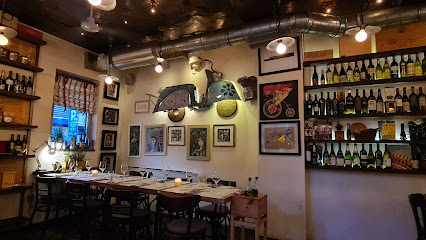
Veliki Cafe Restaurant
Discover the flavors of Serbia at Veliki Cafe Restaurant in Novi Sad - where tradition meets modern cuisine.
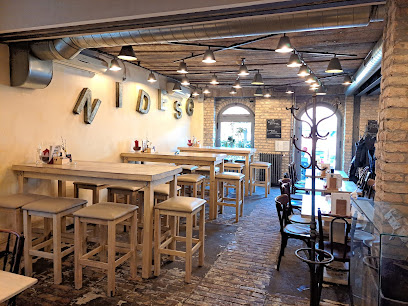
Konoba Riba Ribi Grize Rep
Experience authentic Serbian seafood at Konoba Riba Ribi Grize Rep in Novi Sad - where every dish tells a story.

Le Klok Bistro
Discover the taste of Serbia at Le Klok Bistro in Petrovaradin – where tradition meets innovation in every bite.
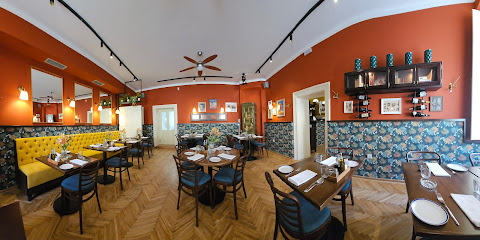
La Dolce Fiore - breakfast & brunch
Experience delightful breakfasts and exquisite brunches at La Dolce Fiore in Novi Sad – where every meal feels like a celebration.

Markets, malls and hidden boutiques
Urban Shop
Discover the latest sneaker trends and skate culture at Urban Shop in Novi Sad, where style meets function in the heart of the city.
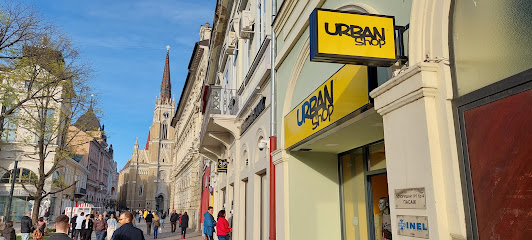
Suveniri Souvenirs Novi Sad
Explore the heart of Novi Sad through unique souvenirs, handmade crafts, and local artistry at Suveniri Souvenirs Novi Sad.
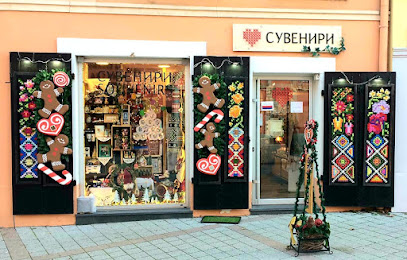
Red Carpet Italian Fashion Store
Discover the essence of Italian elegance at Red Carpet Italian Fashion Store in Novi Sad, offering exquisite women's clothing, accessories, and shoes.
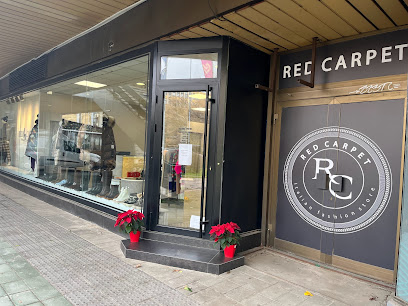
Hunter Fashion - Centar
Discover the perfect blend of style and quality at Hunter Fashion - Centar, Novi Sad's premier destination for men's clothing.
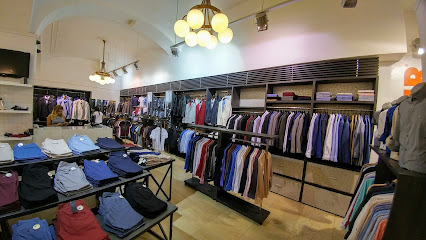
PIPOLLI
Explore Pipolli in Novi Sad for unique Serbian gifts and local crafts that beautifully capture the essence of your travels.
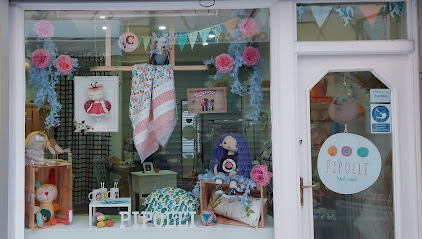
Dunavska
Discover unique gifts and handcrafted treasures at Dunavska, a charming gift shop in the heart of Novi Sad, Serbia.
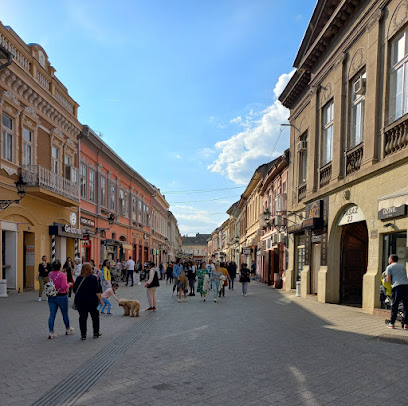
Prodavnica srebra Fantasy
Discover exquisite silver jewelry and unique gifts at Prodavnica srebra Fantasy in Novi Sad, a must-visit for tourists seeking authentic Serbian craftsmanship.
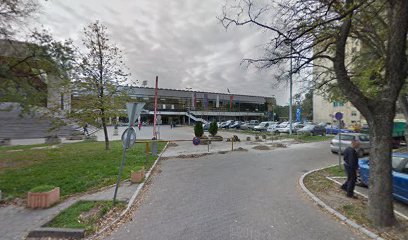
Second Hand Vintage Story
Explore unique vintage finds at Second Hand Vintage Story, a must-visit boutique in Novi Sad for fashion lovers and treasure seekers.
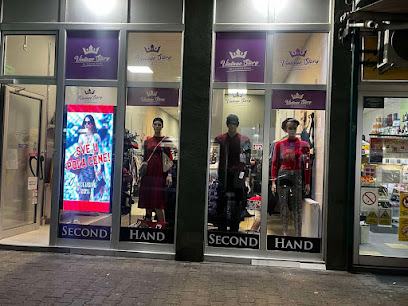
Wish jewelry
Explore Wish Jewelry in Novi Sad for exquisite handcrafted jewelry and unique gifts that embody the spirit of Serbian craftsmanship.
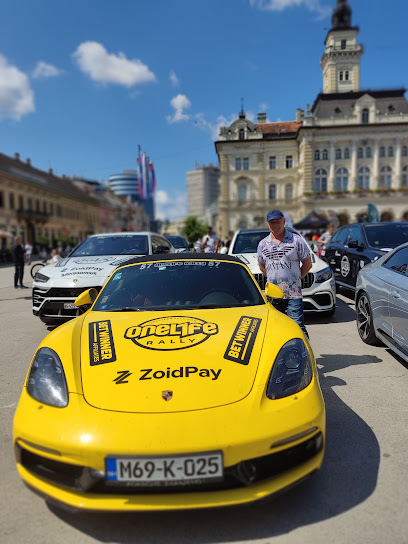
Alexa
Discover fashion-forward styles at Alexa Clothing Store in Novi Sad, where trendy meets timeless in a vibrant shopping experience.

Essential bars & hidden hideouts
Irish Pub
Discover the heart of Irish hospitality at Irish Pub Red Cow in Novi Sad, where lively atmosphere meets delicious food and drinks.
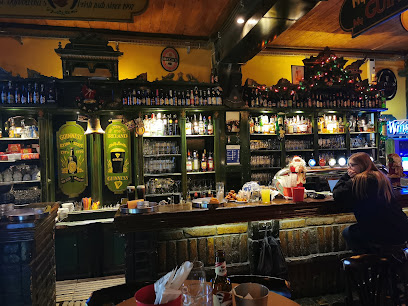
Shamrock bar
Experience the vibrant nightlife of Novi Sad at Shamrock Bar, where delicious drinks and a lively atmosphere create unforgettable memories.
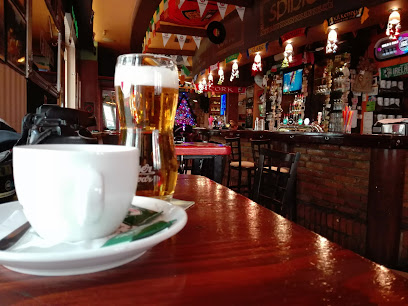
PUBeraj
Discover PUBeraj in Novi Sad, a lively bar with an extensive drink menu, inviting atmosphere, and a hub for entertainment and socializing.
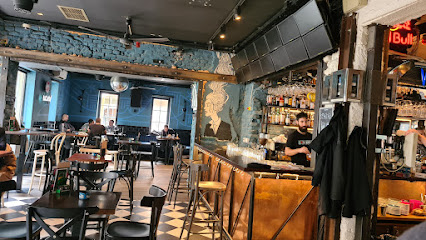
Gerila Bar
Experience the vibrant atmosphere of Gerila Bar in Novi Sad, where dart games and refreshing drinks combine for a fun-filled night out.
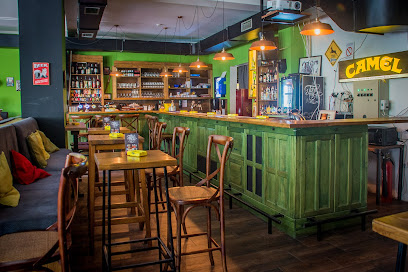
Mazut Pub
Discover the lively atmosphere of Mazut Pub in Novi Sad, where great drinks and local culture come together for an unforgettable experience.
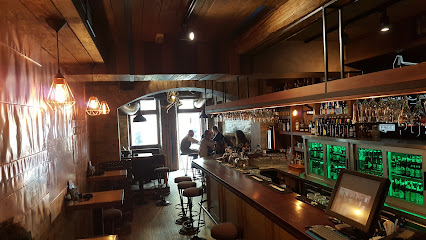
Škripa Pub
Discover the lively ambiance of Škripa Pub in Novi Sad, where local flavors meet a vibrant nightlife experience.
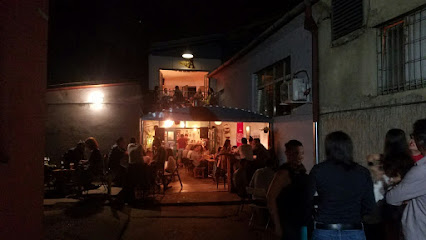
Mamut Pub
Experience the lively nightlife of Novi Sad at Mamut Pub, where great drinks and a vibrant atmosphere await.
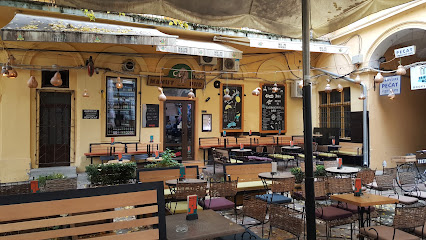
Rebel Pub
Discover the energetic vibe of Rebel Pub in Novi Sad, where live music and creative cocktails meet for an unforgettable night out.
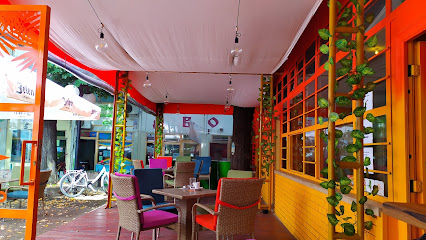
Pop Art Bar Viri Mi Glava
Discover the lively Pop Art Bar Viri Mi Glava in Novi Sad, where vibrant decor meets an incredible drink selection for an unforgettable night out.

Ray bar
Experience the vibrant nightlife of Novi Sad at Ray Bar, where friendly vibes and refreshing drinks await. A must-visit for every traveler!
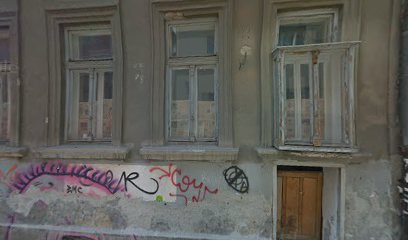
Local Phrases
-
- HelloZdravo
[ZDRAH-voh] - GoodbyeDoviđenja
[doh-VEE-nyah] - YesDa
[dah] - NoNe
[neh] - Please/You're welcomeMolim vas
[MOH-leem vahs] - Thank youHvala
[HVAH-lah] - Excuse me/SorryIzvinite
[eez-VEE-nee-teh] - How are you?Kako si?
[KAH-koh see] - Fine. And you?Dobro. A ti?
[DOH-bro. ah tee] - Do you speak English?Da li govorite engleski?
[dah lee goh-VOH-ree-teh ENG-les-kee] - I don't understandNe razumem
[neh rah-ZOO-mem]
- HelloZdravo
-
- I'd like to see the menu, pleaseMolim vas, mogu li videti meni?
[MOH-leem vahs, MOH-goo lee VEE-deh-tee MEH-nee?] - I don't eat meatNe jedem meso
[neh YEH-dehm MEH-so] - Cheers!Živeli!
[ZHEE-veh-lee] - I would like to pay, pleaseHteo bih da platim, molim vas
[HTEH-oh bee dah PLAH-teem, MOH-leem vahs]
- I'd like to see the menu, pleaseMolim vas, mogu li videti meni?
-
- Help!Pomoć!
[POH-mohtch] - Go away!Idi odavde!
[EE-dee oh-DAHV-deh] - Call the Police!Pozovite policiju!
[POH-zoh-vee-teh poh-lee-TSEE-yoo] - Call a doctor!Pozovite doktora!
[POH-zoh-vee-teh DOHK-toh-rah] - I'm lostIzgubio/la sam se
[eez-GOO-byoh/lah sahm seh] - I'm illBolestan/na sam
[boh-LEHS-tahn/nah sahm]
- Help!Pomoć!
-
- I'd like to buy...Želeo bih da kupim...
[ZHEH-leh-oh bee dah KOO-peem...] - I'm just lookingSamo gledam
[SAH-moh GLEH-dahm] - How much is it?Koliko košta?
[KOH-lee-koh KOSH-tah] - That's too expensiveTo je previše skupo
[toh yeh PREH-vee-sheh SKOO-poh] - Can you lower the price?Možete li da spustite cenu?
[MOH-zheh-teh lee dah SPOO-stee-teh CHEH-noo?]
- I'd like to buy...Želeo bih da kupim...
-
- What time is it?Koliko je sati?
[KOH-lee-koh yeh SAH-tee?] - It's one o'clockJedan je sat
[YEH-dahn yeh saht] - Half past (10)Pola (deset)
[POH-lah (DEH-seht)] - MorningJutro
[YOO-troh] - AfternoonPopodne
[POH-pohd-neh] - EveningVeče
[VEH-cheh] - YesterdayJuče
[YOO-cheh] - TodayDanas
[DAH-nahs] - TomorrowSutra
[SOO-trah] - 1Jedan
[YEH-dahn] - 2Dva
[dvah] - 3Tri
[tree] - 4Četiri
[CHEH-tee-ree] - 5Pet
[peht] - 6Šest
[shesht] - 7Sedam
[SEH-dahm] - 8Osam
[OH-sahm] - 9Devet
[DEH-veht] - 10Deset
[DEH-seht]
- What time is it?Koliko je sati?
-
- Where's a/the...?Gde je...
[gdeh yeh] - What's the address?Koja je adresa?
[KOH-yah yeh ah-DEH-sah] - Can you show me (on the map)?Možete li da mi pokažete (na mapi)?
[MOH-zheh-teh lee dah mee poh-KAH-zheh-teh (nah MAH-pee)] - When's the next (bus)?Kada je sledeći (autobus)?
[KAH-dah yeh SLEH-deh-chee (OW-toh-boos)] - A ticket (to ....)Jednu kartu (do ...)
[YEH-dnoo KAHR-too (doh ...)]
- Where's a/the...?Gde je...
History of Stari Grad
-
Stari Grad, or the Old Town, has its origins traced back to the 18th century when it was established as a fortified settlement. The area was significantly influenced by the Ottoman Empire, which ruled over much of Serbia for several centuries. During this period, Stari Grad developed as a cultural and administrative center, showcasing a blend of Ottoman architecture and European styles.
-
In the late 17th century, after the Great Turkish War, the Habsburg Monarchy took control of the region. This period saw significant urban development in Stari Grad, including the construction of baroque buildings and the establishment of institutions like the Novi Sad Gymnasium, which became a hub for education and culture. The architecture from this era remains a defining feature of Stari Grad.
-
The 19th century marked a pivotal time for Stari Grad as it became a center for Serbian cultural and national revival. The Serbian National Movement gained momentum, and Stari Grad played a crucial role, particularly with events such as the Assembly of Novi Sad in 1848, which aimed to address national rights and promote Serbian language and culture.
-
During World War II, Stari Grad experienced significant destruction. After the war, the neighborhood underwent extensive rebuilding efforts. The post-war period saw a resurgence in cultural activities, with the establishment of various institutions dedicated to preserving the history and culture of Novi Sad. The reconstruction helped restore Stari Grad's status as a vibrant cultural hub.
-
Today, Stari Grad is recognized for its cultural significance, hosting numerous festivals such as the EXIT Festival, which attracts international visitors and showcases music, art, and local traditions. The neighborhood is also home to various museums, galleries, and theaters, reflecting the rich cultural tapestry of Novi Sad and its historical evolution.
Stari Grad Essentials
-
Stari Grad is centrally located in Novi Sad, making it easily accessible from other neighborhoods. From the main bus station, you can take a local bus or taxi to reach Stari Grad in approximately 10-15 minutes. If you're coming from the Novi Sad Train Station, buses and taxis are available, with similar travel times. For those arriving by car, Stari Grad is well-connected by roads, and public parking is available nearby.
-
Stari Grad is highly walkable, with many of its attractions, shops, and cafes located within a short distance. Public transport options include local buses and trams that connect various parts of Novi Sad. Bicycles can be rented from numerous local shops, and cycling along the Danube River promenade is a popular activity. For those preferring to explore via taxi, ride-sharing apps are also operational in the area.
-
Stari Grad is generally safe for tourists, but standard precautions should be taken. Avoid poorly lit areas at night and keep personal belongings secure in crowded places. While violent crime is rare, petty theft can occur, particularly in busy tourist areas. Areas around the Danube can be less populated at night, so exercise caution if walking alone.
-
In case of an emergency, dial 112 for police, fire, or medical assistance. The local hospital is located in the city center, and there are several clinics in Stari Grad. It is advisable to have travel insurance that covers medical emergencies. Pharmacies are available throughout Stari Grad for minor health issues, and many are open late.
-
Fashion: Do dress modestly when visiting religious sites and public places. Don't wear overly revealing clothing. Religion: Do respect local customs, especially in churches. Always remove hats and cover shoulders. Public Transport: Do be courteous, offer your seat to the elderly. Don't eat or drink on public transport. Greetings: Do greet with a handshake and a smile. Don’t be overly formal or use titles unless necessary. Eating & Drinking: Do try local specialties and engage with locals. Don’t refuse food offerings as it may be considered impolite.
-
To experience Stari Grad like a local, visit the daily markets for fresh produce, and enjoy traditional Serbian dishes at local eateries. Take a leisurely stroll along the Danube River, especially during sunset. Engage with locals; many are friendly and enjoy sharing stories about their city. Don’t miss the vibrant cultural events at the Petrovaradin Fortress, especially during the EXIT festival, a renowned music festival.
Trending Landmarks in Stari Grad
Nearby Cities to Stari Grad
-
Things To Do in Belgrade
-
Things To Do in Pančevo
-
Things To Do in Subotica
-
Things To Do in Smederevo
-
Things To Do in Szeged
-
Things To Do in Tuzla
-
Things To Do in Arad
-
Things To Do in Pecs
-
Things To Do in Kragujevac
-
Things To Do in Kraljevo
-
Things To Do in Kecskemet
-
Things To Do in Sarajevo
-
Things To Do in Zenica
-
Things To Do in Banja Luka
-
Things To Do in Jajce

